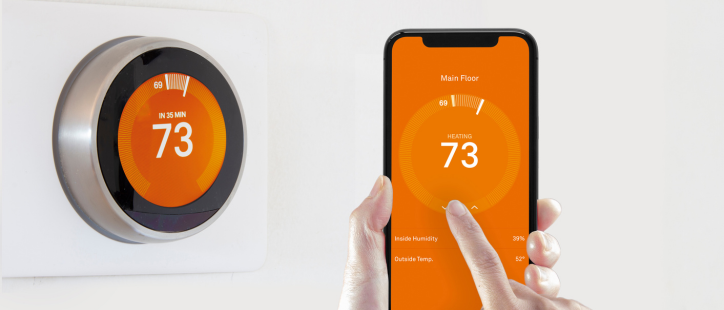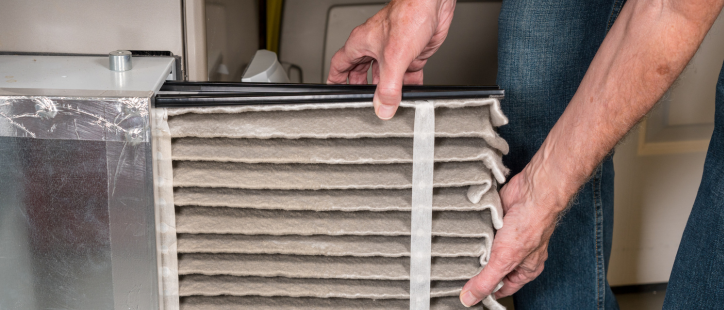During the cold winter months here in Massachusetts’ North Shore and Merrimack Valley, a functioning furnace is crucial for maintaining a warm and comfortable home. However, when your furnace starts blowing cold air instead of the expected warmth, it can be both frustrating and uncomfortable. In this blog post, we’ll explore the common reasons why your furnace might be blowing cold air and provide solutions to help you diagnose and resolve the issue.
- Thermostat Settings:
The first thing to check when your furnace is blowing cold air is the thermostat settings. Ensure that the thermostat is set to “heat” mode and that the temperature is set higher than the current room temperature. Sometimes, accidental adjustments or thermostat malfunctions can lead to cold air blowing from your furnace.
- Air Filter Blockage:
A clogged or dirty air filter can obstruct airflow and cause your furnace to blow cold air. A clean filter is essential for efficient heating. To address this issue:
- Turn off the furnace.
- Locate the air filter (usually found near the furnace).
- Inspect the filter for dirt and debris. If it’s dirty, replace it with a new one.
- Ensure that you’re using the correct type and size of filter as recommended by the manufacturer.
- Regularly check and replace the filter according to the manufacturer’s guidelines to prevent future blockages.
- Pilot Light or Ignition Problems:
If your furnace relies on a pilot light or electronic ignition to ignite the burners, issues with these components can lead to cold air blowing. Here’s what you can do:
- For furnaces with a pilot light, check if it’s lit. If not, follow the manufacturer’s instructions for safely relighting it. If you’re unsure, contact a professional technician.
- For furnaces with electronic ignition, inspect the ignition system for malfunctions. If the ignition is not working correctly, contact a technician for repairs.
- Thermocouple Issues:
The thermocouple is a safety device that detects the pilot light’s presence. If it fails to sense the pilot light, it can shut off the gas supply, causing your furnace to blow cold air. If you suspect a faulty thermocouple, it’s best to have it replaced by a professional technician.
- Fuel Supply Problems:
Furnaces that use natural gas or propane require a consistent fuel supply to produce heat. If there are issues with the gas supply, it can result in cold air blowing from the furnace. Here’s what you can do:
- Check if other gas appliances in your home are working correctly. If they’re also experiencing issues, contact your gas utility provider to address the problem.
- If other gas appliances are functioning correctly, inspect the furnace’s gas valve and supply line for any visible issues or gas leaks. If you detect a gas leak, immediately turn off the gas supply, open windows for ventilation, and contact a professional technician or your gas utility provider.
- Dirty or Blocked Burners:
The burners in your furnace can become dirty or blocked over time, affecting the combustion process and causing cold air to blow. Here’s what you can do:
- Turn off the furnace.
- Remove the access panel covering the burners.
- Inspect the burners for dirt, debris, or blockages.
- Carefully clean the burners with a soft brush or cloth, being cautious not to damage any components.
- Once clean, replace the access panel and turn the furnace back on.
- Overheating and Safety Shutdown:
Furnaces are equipped with safety features to prevent overheating. If the furnace’s internal temperature becomes too high, it may shut down to prevent damage or fires. This can result in cold air blowing as the furnace cools down. Common causes of overheating include:
- Blocked vents or air registers.
- A malfunctioning blower motor.
- Clogged air filters.
- Issues with the limit switch or high-limit control.
To address overheating issues:
- Turn off the furnace.
- Check and clear any obstructions in vents, registers, and air returns.
- Inspect and replace a clogged air filter if necessary.
- Contact a professional technician to diagnose and repair any blower motor or limit control problems.
- Malfunctioning Blower Motor:
The blower motor is responsible for circulating warm air throughout your home. If it malfunctions, it can result in cold air blowing from your furnace. Signs of a faulty blower motor may include unusual noises, such as squealing or rattling. In this case, it’s advisable to contact a professional technician to inspect and repair or replace the blower motor.
- Professional Maintenance:
Regular professional maintenance is essential to keep your furnace running efficiently and prevent issues that lead to cold air blowing. Schedule annual furnace inspections and servicing with the qualified HVAC technicians at Maffei Services. During maintenance, we can identify and address potential problems before they affect your furnace’s performance.
Call the Local HVAC Specialists at Maffei Services if Your Furnace is Blowing Cold Air
When your furnace is blowing cold air, it’s essential to diagnose and resolve the issue promptly for your comfort and safety. While some issues can be addressed with simple troubleshooting, others require the expertise of a professional HVAC technician. Regular maintenance and servicing are also crucial for preventing furnace problems and ensuring that your heating system operates efficiently throughout the winter months. By understanding the possible causes and solutions for a furnace blowing cold air, you can maintain a warm and comfortable home during the colder seasons.



